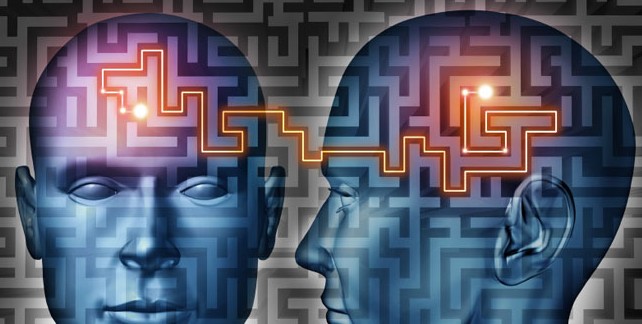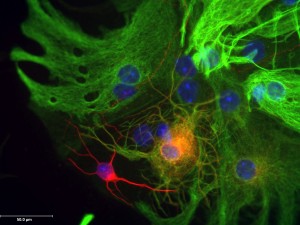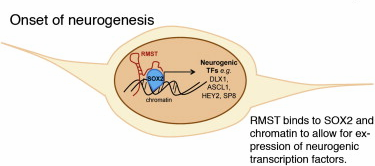Several stories broke this week about medical research into the human brain and the origin of neurons. I share with you three.
Humans Make Brain-to-Brain Connection – No Hands, No Talking
If you didn’t read my blog post about rat-to-rat brain communication then you don’t need to bother because you can jump right away to the first human-to-human brain interface, its successor. The difference in the two experiments is the first involved implanting a circuit in the brains of both rats to act as a transmitter and receiver. In the human experiment the brain signals were transmitted from one to another with the two subjects wearing specially outfitted caps containing a magnetic stimulation coil positioned over the brain’s left motor cortex. No plug ins. No implants.
Both subjects were located at the University of Washington but at opposite sides of the campus. Using electrical stimuli the sender instructed the receiver to type on a computer keyboard. The receiver was instructed not to look at the keyboard or computer screen. He wore noise cancelling earphones. When stimulated by the sender’s message he involuntarily used his right index finger to strike the space bar. He said it felt like a nervous tic.
Technology used included an EEG (electroencephalograph) and transcranial magnetic stimulation. The coil in being placed over the left motor cortex would impact right-hand motor control.
Is there a practical application for this type of research. Possibly for those sufering from locked-in syndrome or other disabilities. It could also be used in remote emergencies where a skilled operator could interface with a person at the site of disaster to effect a rescue.
Growing a Human Brain in a Petri Dish
We have been experimenting in growing and bioprinting body parts in laboratory settings for some time now. But human brains? Well it seems that researchers at the Institute of Molecular Biotechnology in Vienna, Austria, are growing human brains from stem cells. The result are four millimeter sized brains containing the same discrete structures we see in the development of the fetal brain.
Their work appears in this month’s Nature under the title, “Cerebral organoids model human brain development and microcephaly” which roughly translates to, we grew a three-dimensional mini-brain that was viable for up to 10 months. We used stem cells and watched them self organize around an artificial scaffolding to create the brain’s natural architecture. The rsult was a brain that contained cortex, retina and structures for producing cerebrospinal fluid.
They used the mini brains to study microcephaly, a genetic disorder that occurs in fetal development leading to reduced brain size and cognitive impairment. They intend to use these mini-brains for other brain disorder studies including schizophrenia and autism, cognitive disorders that researchers believe may have their origins in early brain development.
Researchers in Singapore Discover What Controls Neuron Generation
Neurons are very important cells. Without them we would have no brain and no nervous system. Up until now we had not yet isolated the chemistry in our bodies responsible for neurogenesis but researchers at the A*STAR’s Genome Institute of Singapore (GIS) discovered the genetic regulator responsible for new neurons. It is a form of non-coding RNA called RMST.
What is a non-coding RNA? It is an RNA that is not regulated in its function by a protein. Until the 1990s scientists were at a loss to explain much of the RNA floating around within the nucleus of cells. Often described as junk, just like the sections of our unexplained DNA, we are now beginning to unlock their mystery.
In the case of RMST, the researchers in Singapore discovered it acts directly as a regulator of neurogenesis effecting hundreds of genes. In understanding the regulatory function of RMST we may be able to find treatments for many neurodegenerative diseases. Pretty exciting stuff.



















